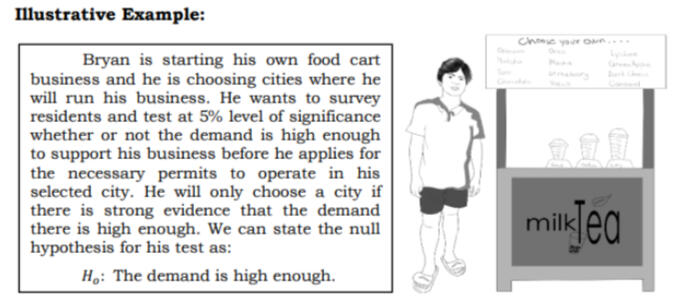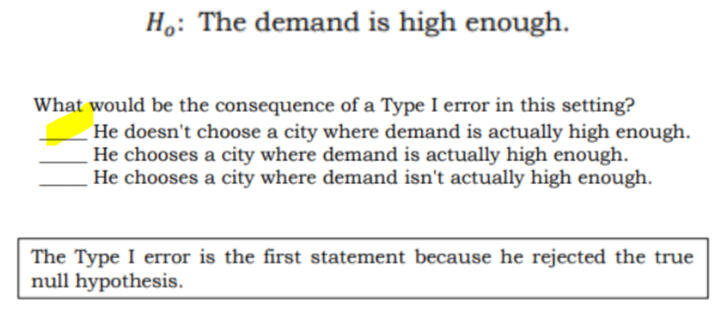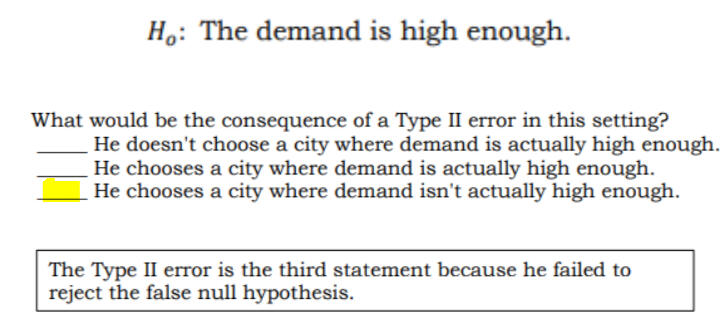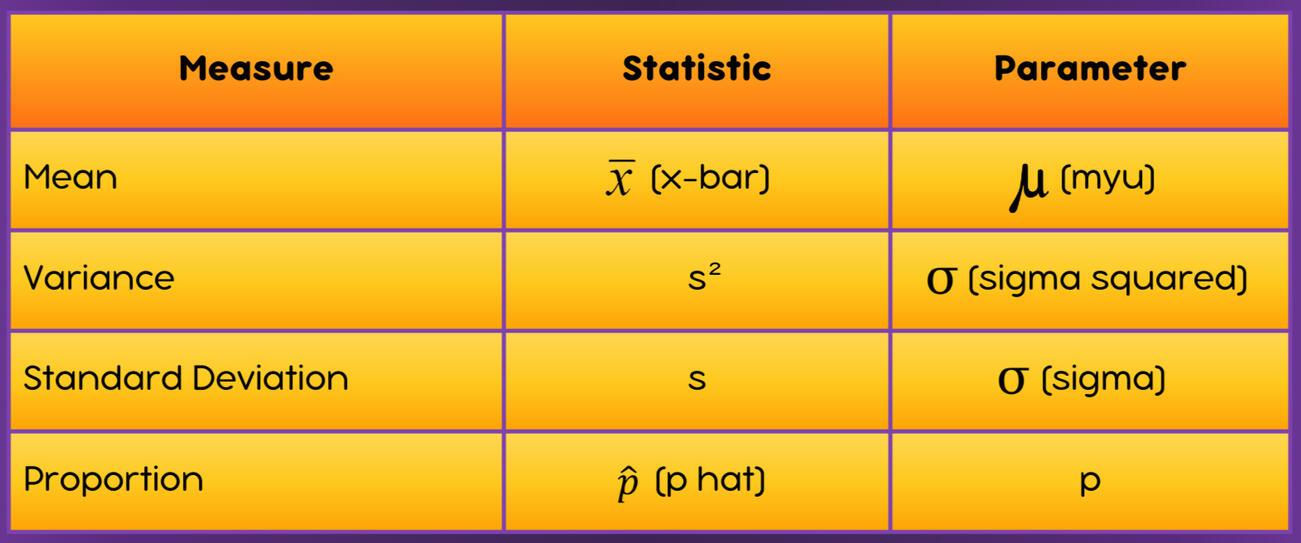HYPOTHESIS
TYPE I and TYPE II EXAMPLES


TYPE I ERROR = REJECTED the null hypothesis when it is TRUE.You did not believe the hypothesis even though it was true. = Error: You didn’t choose a city.

TYPE II ERROR = FAILED TO REJECT the null hypothesis when it is FALSE.You believed the hypothesis but it was wrong = Error: You chose a city where the demand is not actually high enough.

SYMBOLS USED TO DENOTE PARAMETERS
What are the symbols used to denote parameters?

Statistical Hypothesis - conjecture about population parameter NOT SAMPLENOTE: Statistic = Values in a sample ; Parameter = Values in a Population
DATA COLLECTION & RESEARCH INSTRUMENTS
What is Data Collection?
- procedure for gathering, measuring, and analyzing precise ideas for research utilizing a tried-and-true methodology.
- MOST IMPORTANT step for research
What is Research Instrument?
- instrument used to gather, evaluate, and interpret data for your research study.
TYPES OF DATA COLLECTION
A. Traditional Collection Techniques
| Technique | Advantage | Disadvantage |
|---|---|---|
| 1. In-person Interviews | - In-depth - High validity - Highest level of participant-interviewer interaction | Expensive |
| 2. Mail Survey | - Accessible to anyone | - Expensive - Low accuracy |
| 3. Phone Surveys | - Anyone can reach - High validity | - Costly |
B. Modern Collection Techniques
| Technique | Advantage | Disadvantage |
|---|---|---|
| 1. Web/online surveys & Online Interview | - Inexpensive - Self-administered - Small chance of error - Expensive | - Internet is not accessible anywhere - Not everyone desires to share information online. |